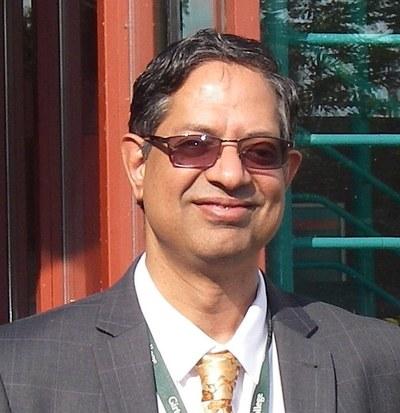The Geotechnical and Environmental Research Group

The interests of the Geotechnical and Environmental Research Group are wide, ranging from the fundamental mechanics of soils to encompass applications (such as construction processes), infrastructure (such as tunnels and shafts), environmental engineering, petroleum engineering structures (such as offshore piles and pipelines), sustainable and renewable energy technologies (like offshore wind farms) and earthquake engineering including soil liquefaction. Since its formation more than 50 years ago the Group has produced more than 300 PhDs.
The Group has extensive facilities for laboratory testing, centrifuge modelling, and numerical analysis. We operate on the main Engineering Department site, where we have the Geotechnical Research Office, the Geomechanics Laboratory and the Geo-environmental Laboratory. We also carry out our research at West Cambridge, at the Schofield Centre for Geotechnical Process and Construction Modelling and in the new Civil Engineering Building.
The Schofield Centre has "focussed on the key questions of construction and environmental technology, where field, computational and physical modelling studies can be integrated in collaboration with industry", just as our original JIF grant promised. Under the leadership of our Chief Technician John Chandler, Kristian Pether, Chris McGinnie and Mark Smith have done sterling work, keeping the modelling work flowing, and steadily upgrading our facilities.
The Turner Beam Centrifuge has been as active as ever, with tests taking place every week throughout the year. Centrifuge projects use in-flight actuators like our 1-D and 2-D robots which can operate under force or displacement control. We are able to characterise the soil inflight using mini CPT or T-bar devices and can carry out of shear wave velocity (Vs) profiling. Recently we added a servo-hydraulic earthquake actuator that is able to model realistic earthquake motions like the Kobe or Northridge earthquakes. It operates using a powerful hydraulic power-pack and the hydro-static bearing supported high pressure (300 bar) fluid slip rings. This new device replaces the hugely successful Stored Angular Momentum (SAM) earthquake actuator. We are now able to use high speed imaging followed by PIV in earthquake tests to follow soil deformations below structures in the pre- and post-liquefaction phases. The Schofield mini-drum centrifuge has been upgraded to have a working diameter of 1.01 m and continues to be very active for 4th year projects, research and industry supported projects.
In parallel with our small-scale modelling, we are exploring new areas of research to improve techniques of field monitoring. We are collaborating with contractors and infrastructure owners to develop new field measurement technologies. These aim to provide better control and monitoring of urban construction. Field monitoring with new LUNA optical fibre technology has continued on a number of piling projects, on major tunnelling projects in London and Singapore, and for slope stability and soil anchors. Wireless networks of MEMS are also being pioneered for a rich variety of monitoring applications.
Laboratory work in permeation and chemical testing, soil mixing and sustainable products usually takes place on the main site, in our second-floor laboratories. A key feature of the research here is the development of self-healing materials, with a new focus on self-sensing materials. This work is supported by large EPSRC and EU funded projects.
Over the years, we have received considerable support from industry both as direct funding and through collaborative activity in the field. We currently enjoy research collaborations with Dong Energy; Thames Water; Thames Tideway Tunnels; London Underground Limited; Crossrail; NGI; Liang O’Rourke; Cementation-Skanska; BP, Shell; Fugro; KW Limited; David Cathie, OWLC, Adani Green Energy Ltd, , Giken Seisakusho; Geotechnical Consulting Group; Arup; Atkins; and others.
We welcome you to browse our website using the links to find out more about the research that is currently underway. Detailed descriptions of our facilities are available, and a full list of recent publications is also on-line. Each researcher has written a short summary of their recent research. You may contact the research worker and supervisor of any project directly to request further information. Some information, of course, may temporarily be confidential to sponsors.
If you are interested in engaging in collaborative research, or joining the group as a student or visitor, you may wish to contact a member of staff whose interests are similar to your own.
Professor Gopal Santana Phani Madabhushi
Head of Geotechnical and Environmental Group
